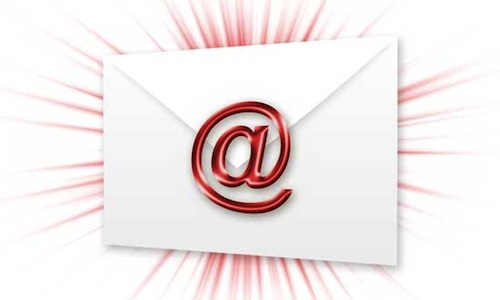Over the last 72 hours, even after using Unroll.me, I’ve gotten about 20 things called an “e-blast.” I had never thought that much about this before, but where I’m working part-time right now calls their own internal e-mail every Tuesday/Wednesday “an e-blast.” Why does everyone do this? MailChimp seems to wonder too:
We cringe when someone asks us if we can help them “blast” an email out to people. For one, the word “blast” should only be used in reference to missiles and tanks. Not permission marketing. Secondly, when people say “blast,” it usually means they think email is just a way to shoot out a bunch of emails, whether people want to hear from them or not. Email is all about getting permission from customers, sending them stuff they want to read, and listening to their feedback.
Right. I agree. E-mail is way overused, but ultimately it’s about relationships. Whether you want someone to see a picture of your daughter, a cute cat, a spreadsheet, a lunch date, or a marketing idea, ultimately you’re trying to build a relationship with a potential friend/customer/client/whatever. Doesn’t “blast” make you think of stuff like shrapnel or war? Should we be talking more about “outreach” or “relationships” or something?
Constant Contact seems to get it too:
That’s because email blast is a dirty word.
Blast invokes images of something you send out without much thought or consideration. It doesn’t take much time or effort either, because you’re literally just “blasting” out information.
Effective email marketing on the other hand is something that takes time, thought, and consideration because you’re focused on building relationships and not just “blasting” your audience with updates. You need to craft a message that’s relevant to your readers and offer something of value.
This type of email marketing enables you to build relationships, stay top of mind, drive valuable repeat business, and encourage word-of-mouth referrals.
In the broader context of e-mail marketing, this is a good — if simplistic — read about how to actually determine who you’re targeting, why, and when. I haven’t been able to track down the origins of the “e-blast” concept, but it can set you up to look like a spammer, so that’s good.
Broadly, I’d say these couple of things around the idea of e-mail marketing and/or “e-blasts:”
1. Read this. Literally no one has any attention span at all anymore. So whatever you send needs to be extremely targeted and easy to understand. I saw an “e-blast” a couple of days ago that essentially had 12 different things the respondent needed to do, and another six-seven they could choose to do. 18 total things? Yea. That’s an opt-out/ignore situation.
2. Eventually, people get good at ignoring messages they don’t want to be a part of, or technologies crop up that allow them to ignore advertising (TiVo) or e-mail marketing (Unroll.me and some new GMail features). The science of marketing is essentially about “I have something I want people to know about/buy/embrace, so… how do I do it?” It constantly evolves because the way to reach people the most effectively is always constantly evolving. Is it TV? Is it Google ads? Is it magazines? Is it e-mail? Etc.
3. Just don’t call it a f’n e-blast. You’re not randomly firing shots at someone — or, if you are, you should probably stop. Call it “a relationship vessel” or something equally awful and corporate-sounding. At least you’ll be ahead of the curve.

I agree , always hated calling email blasts or busts . Sounds like we are attacking our customers. I guess the next steps for companies would be to figure out how to keep customers from Unsubscribing.
seems these blasters are just doing what spammers use to do…always said what the spammers do today some brighter spark will blast out tomorrow and do it badly… which has its negative knock on effect for other more responsible campaigns…step at a time, build relationships that stay around that interact, isn’t that what the aim should be?